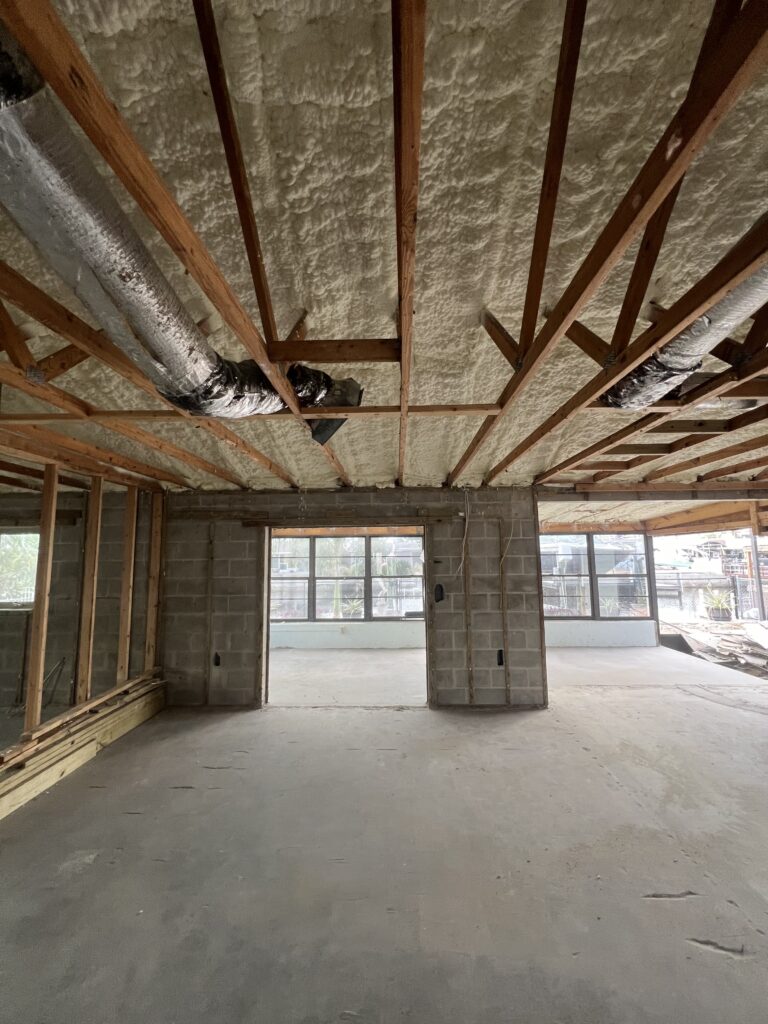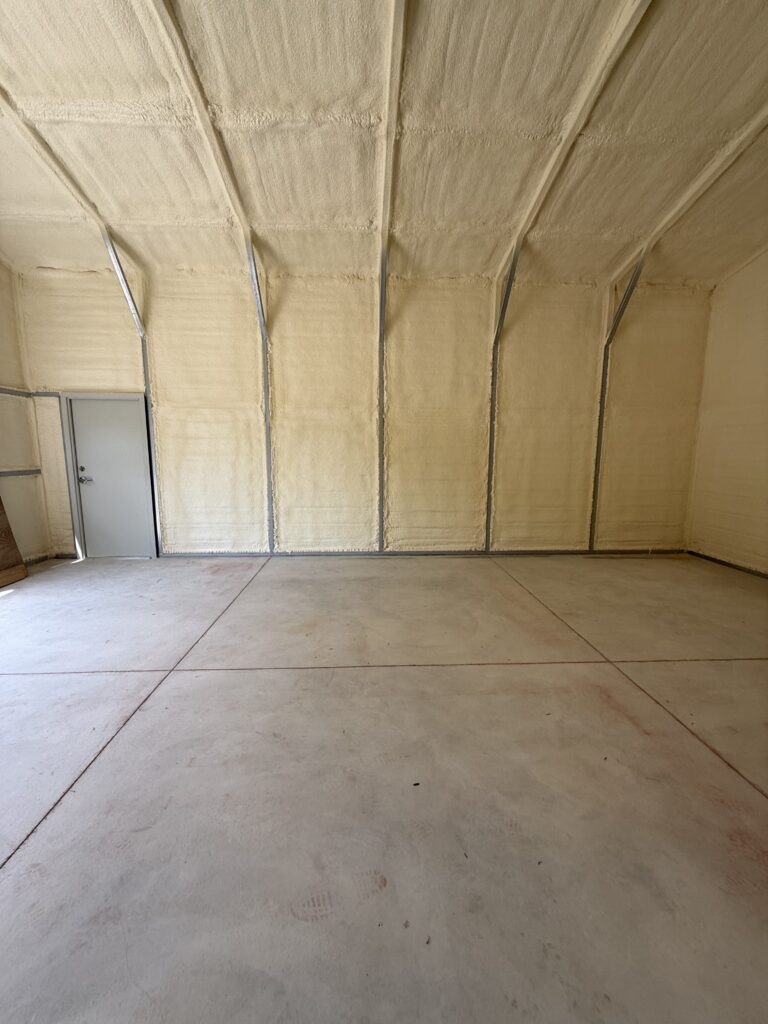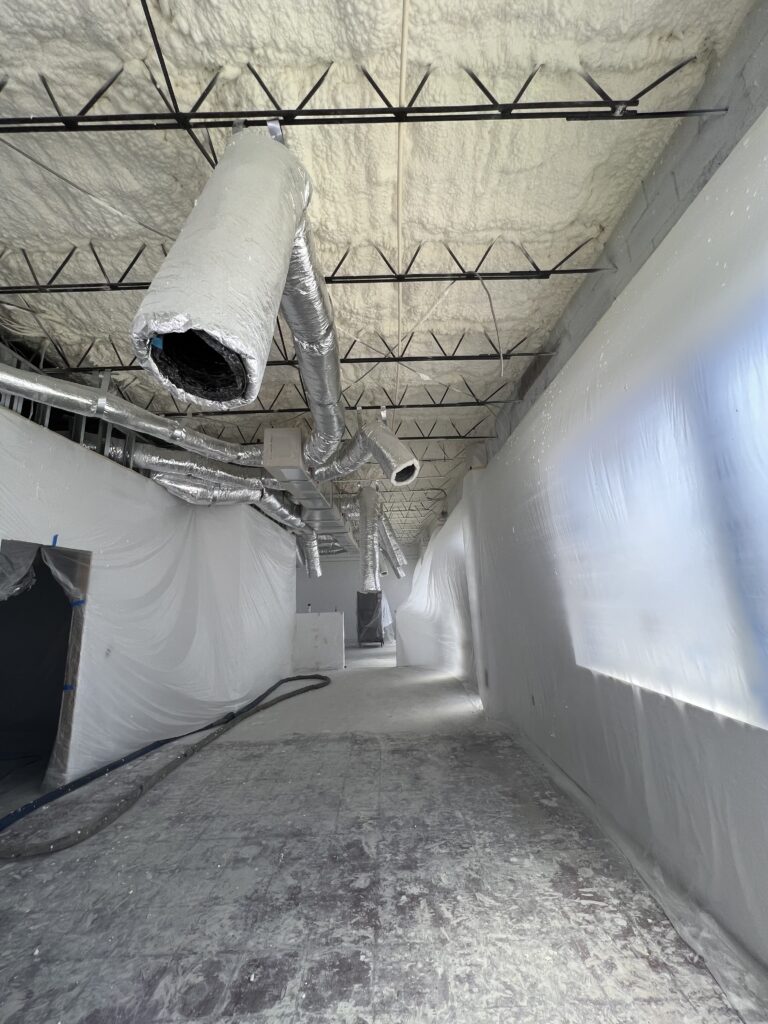What’s the Difference Between Open Cell and Closed Cell Spray Foam Insulation?
When choosing spray foam insulation for your home or building, one of the biggest questions is:
Should I use open cell or closed cell foam?
Both types have their advantages depending on your needs, budget, and climate. In this guide, we break down the difference between open cell and closed cell spray foam insulation—from R-value to moisture resistance—so you can make the right choice.
Open and closed cell foam are two different types of spray foam insulation. They have different strengths and weaknesses, and one is not necessarily better than the other. It comes down to understanding the benefits of open cell vs closed cell foam and choosing the type that fits your needs.
Let’s start by looking at the differences between open and closed cell foams.
What’s the Main Difference Between Open Cell and Closed Cell Foam?
Spray foam gets its name from the tiny bubbles, or “cells,” that make up its structure. The way these cells are formed is what defines the foam type:
- Open Cell Foam:
- Cells are intentionally left open
- Soft, flexible, and sponge-like texture
- Expands significantly to fill gaps and hard-to-reach areas

- Closed Cell Foam:
- Cells are fully closed and packed tightly
- Rigid, dense, and more durable
- Acts as both an insulator and vapor barrier

Density: Light vs Heavyweight
- Open Cell Foam Density:
- ~0.5 lbs per cubic foot
- Closed Cell Foam Density:
- 1.75+ lbs per cubic foot
➤ More than 3x denser, making it stronger and more impact-resistant
- 1.75+ lbs per cubic foot
R-Value: How Well Do They Insulate?
R-value measures how well insulation resists heat flow—higher is better.
- Closed Cell Spray Foam:
- R-Value: 6.0 to 7.0 per inch
- Great for high-performance insulation in extreme climates
- Superior energy efficiency
- Open Cell Spray Foam:
- R-Value: ~3.5 per inch
- Best for interior walls and moderate climates
- Offers good insulation but less effective in extreme heat or cold
Expansion Rate: How Much Space Does It Fill?
- Closed Cell Foam:
- Expands to ~1 inch per application
- Multiple layers can be applied for higher R-values
- Open Cell Foam:
- Expands up to 3 inches in one application
- Ideal for quickly filling large cavities
Application Strengths
- Benefits of Closed Cell Foam:
- High R-value in tight spaces
- Adds structural strength to walls and roofs
- Water-resistant and functions as a vapor barrier
- Ideal For:
- Metal buildings
- Exterior walls
- Crawl spaces
- Roofing systems

- Benefits of Open Cell Foam:
- Fills hard-to-reach nooks and crannies
- Excellent soundproofing qualities
- Budget-friendly compared to closed cell
- Ideal for:
- Interior walls
- Ceilings
- Between floors
- Attics in moderate climates

Which Spray Foam Insulation Is Right for You?
When comparing insulation options, it’s important to understand the difference between open cell and closed cell spray foam insulation. This guide also helps clarify the pros and cons of closed cell versus open cell foam, so you can confidently choose what’s right for your project.
Here’s a quick side-by-side comparison:
| Feature | Open Cell Foam | Closed Cell Foam |
|---|---|---|
| R-Value (per inch) | ~3.5 | 6.0–7.0 |
| Density | Light (~0.5 lbs/ft³) | Dense (1.75+ lbs/ft³) |
| Expansion | Expands to 3 inches | Expands to 1 inch |
| Water Resistance | Not water-resistant | Yes, acts as vapor barrier |
| Cost | More affordable | Higher cost per sq ft |
| Best For | Soundproofing, interior fill | Exterior, roofing, high R-value |
Final Thoughts: Closed Cell vs Open Cell Foam
Choosing between closed cell and open cell spray foam depends on your project’s goals:
- Want maximum energy efficiency and moisture protection? → Go with closed cell foam
- Looking for soundproofing or filling tight spaces on a budget? → Open cell may be the better choice
Ready to Get a Custom Quote?
Still unsure which insulation is best for your home or building? Let our team help you make the right call.

Comments (5)
Hi, this is a comment.
To get started with moderating, editing, and deleting comments, please visit the Comments screen in the dashboard.
Commenter avatars come from Gravatar.
Awesome post! Keep up the great work! 🙂
Great content! Super high-quality! Keep it up! 🙂
Great website! It looks really professional! Maintain the excellent job!
I have been examinating out many of your posts and i must say pretty good stuff. I will make sure to bookmark your blog. Alix Shep Mendoza